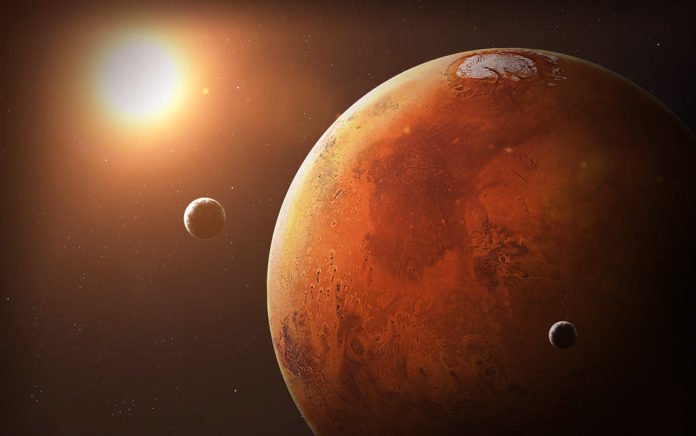Scientists at Lomonosov MSU, Faculty of Soil Science have recently identified the resistance microorganisms have against gamma radiation at very low temperatures.
The temperature on Mars is very low at about -63 °C and the pressure is less than 100-1000 times of the Earth. Up to this point, nobody knew to what degree microorganisms can oppose such extraordinary components. By discovering the breaking points, researchers can evaluate the likelihood of microorganisms and biomarkers getting by in different questions inside the Close planetary system.
This data will end up noticeably priceless in arranging astrobiological space missions when it is essential to painstakingly pick articles and districts of research. In addition, it completely creates systems for the recognition of life.
During the study, scientists studied the radiation resistance of microbial communities in permafrost sedimentary rocks. These sedimentary rocks are considered to be a terrestrial analog of regolith, the ground left after space weathering.
Vladimir S. Cheptsov, a post-graduate student at the Lomonosov MSU said, “We have studied the joint impact of a number of physical factors (gamma radiation, low pressure, low temperature) on the microbial communities within ancient Arctic permafrost. We also studied a unique nature-made object – the ancient permafrost which has not melted for about two million years.”
“In a nutshell, we have conducted a simulation experiment that well covered the conditions of cryopreservation in Martian regolith. It is also important that in this paper we studied the effect of high doses (100 kGy) of gamma radiation on prokaryotes’ vitality, while in previous studies no living prokaryotes were ever found after doses higher than 80 kGy.”
While mimicking these components impacting the microorganisms, the scientists utilized a unique consistent atmosphere chamber that permits keeping up low temperature and weight amid gamma-light.
Scientists noted normal microbial groups were utilized as a model protest, not unadulterated societies of microorganisms.
The microbial groups considered have indicated high protection from the states of mimicked Martian condition. After the light, the aggregate tally of prokaryotic cells and the number of metabolically dynamic bacterial cells stayed at the control level, while the quantity of refined microscopic organisms (those which develop on supplement media) diminished ten times, and the quantity of metabolically dynamic cells of archaea diminished triple. The abatement in the refined microscopic organisms numbers was caused most likely by an adjustment in their physiological state, and not by death.
Scientists found fairly high biodiversity of bacteria in the exposed sample of permafrost. Despite the fact that the microbial group structure experienced critical changes after light. Specifically, actinobacteria populaces of the sort Arthrobacter, which were not uncovered in the control tests, wound up noticeably overwhelming in bacterial groups following the recreation.
This was presumably caused by the reduction in predominant bacterial populaces, so the actinobacteria of the class Arthrobacter could be identified by the specialists. The creators additionally recommend that these microorganisms are more impervious to the mimicked conditions.
There were additional considers which demonstrated that these microscopic organisms have genuinely high protection from the bright radiation, and their DNA is all around safeguarded in old permafrost through a great many years.
Scientists noted, “The results of the study indicate the possibility of prolonged cryoconservation of viable microorganisms in the Martian regolith. The intensity of ionizing radiation on the surface of Mars is 0.05-0.076 Gy/year and decreases with depth.”
“Taking into account the intensity of radiation in the Mars regolith, the data obtained by us makes it possible to assume that hypothetical Mars ecosystems could be conserved in anabiotic state in the surface layer of regolith (protected from UV rays) for at least 1.3-2 million years, at a depth of two meters for no less than 3.3 million years, and at a depth of five meters for at least 20 million years.”
“The data obtained can also be applied to assess the possibility of detecting viable microorganisms at other objects of the Solar System and within small bodies in outer space.”
This is for the first time, scientists proved that prokaryotes can survive irradiation with ionizing radiation in doses exceeding 80 kGy.
Journal Reference
- Vladimir S. Cheptsov, Elena A. Vorobyova, Natalia A. Manucharova, Mikhail V. Gorlenko, Anatoli K. Pavlov, Maria A. Vdovina, Vladimir N. Lomasov & Sergey A. Bulat. 100 kGy gamma-affected microbial communities within the ancient Arctic permafrost under simulated Martian conditions. Extremophiles 21, 1057–1067 (2017). DOI: 10.1007/s00792-017-0966-7
